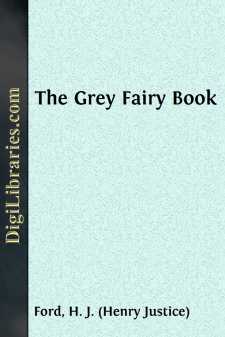Categories
- Antiques & Collectibles 13
- Architecture 36
- Art 48
- Bibles 22
- Biography & Autobiography 813
- Body, Mind & Spirit 142
- Business & Economics 28
- Children's Books 17
- Children's Fiction 14
- Computers 4
- Cooking 94
- Crafts & Hobbies 4
- Drama 346
- Education 46
- Family & Relationships 57
- Fiction 11829
- Games 19
- Gardening 17
- Health & Fitness 34
- History 1377
- House & Home 1
- Humor 147
- Juvenile Fiction 1873
- Juvenile Nonfiction 202
- Language Arts & Disciplines 88
- Law 16
- Literary Collections 686
- Literary Criticism 179
- Mathematics 13
- Medical 41
- Music 40
- Nature 179
- Non-Classifiable 1768
- Performing Arts 7
- Periodicals 1453
- Philosophy 64
- Photography 2
- Poetry 896
- Political Science 203
- Psychology 42
- Reference 154
- Religion 513
- Science 126
- Self-Help 84
- Social Science 81
- Sports & Recreation 34
- Study Aids 3
- Technology & Engineering 59
- Transportation 23
- Travel 463
- True Crime 29
The Brown Fairy Book
Description:
Excerpt
PREFACE
The stories in this Fairy Book come from all quarters of the world. For example, the adventures of ‘Ball-Carrier and the Bad One’ are told by Red Indian grandmothers to Red Indian children who never go to school, nor see pen and ink. ‘The Bunyip’ is known to even more uneducated little ones, running about with no clothes at all in the bush, in Australia. You may see photographs of these merry little black fellows before their troubles begin, in ‘Northern Races of Central Australia,’ by Messrs. Spencer and Gillen. They have no lessons except in tracking and catching birds, beasts, fishes, lizards, and snakes, all of which they eat. But when they grow up to be big boys and girls, they are cruelly cut about with stone knives and frightened with sham bogies—‘all for their good’ their parents say—and I think they would rather go to school, if they had their choice, and take their chance of being birched and bullied. However, many boys might think it better fun to begin to learn hunting as soon as they can walk. Other stories, like ‘The Sacred Milk of Koumongoé,’ come from the Kaffirs in Africa, whose dear papas are not so poor as those in Australia, but have plenty of cattle and milk, and good mealies to eat, and live in houses like very big bee-hives, and wear clothes of a sort, though not very like our own. ‘Pivi and Kabo’ is a tale from the brown people in the island of New Caledonia, where a boy is never allowed to speak to or even look at his own sisters; nobody knows why, so curious are the manners of this remote island. The story shows the advantages of good manners and pleasant behaviour; and the natives do not now cook and eat each other, but live on fish, vegetables, pork, and chickens, and dwell in houses. ‘What the Rose did to the Cypress’ is a story from Persia, where the people, of course, are civilised, and much like those of whom you read in ‘The Arabian Nights.’ Then there are tales like ‘The Fox and the Lapp’ from the very north of Europe, where it is dark for half the year and daylight for the other half. The Lapps are a people not fond of soap and water, and very much given to art magic. Then there are tales from India, told to Major Campbell, who wrote them out, by Hindoos; these stories are ‘Wali Dâd the Simple-hearted,’ and ‘The King who would be Stronger than Fate,’ but was not so clever as his daughter. From Brazil, in South America, comes ‘The Tortoise and the Mischievous Monkey,’ with the adventures of other animals. Other tales are told in various parts of Europe, and in many languages; but all people, black, white, brown, red, and yellow, are like each other when they tell stories; for these are meant for children, who like the same sort of thing, whether they go to school and wear clothes, or, on the other hand, wear skins of beasts, or even nothing at all, and live on grubs and lizards and hawks and crows and serpents, like the little Australian blacks.
The tale of ‘What the Rose did to the Cypress,’ is translated out of a Persian manuscript by Mrs....








